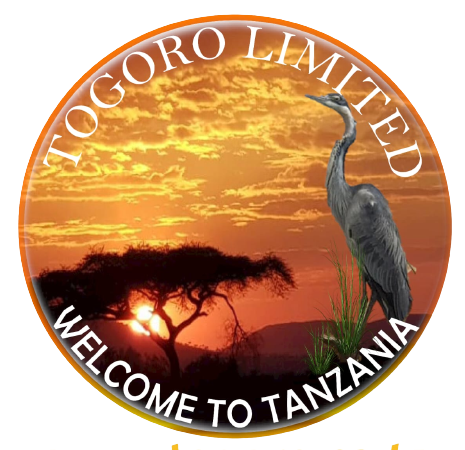6- Days Wildlife Adventures Safari
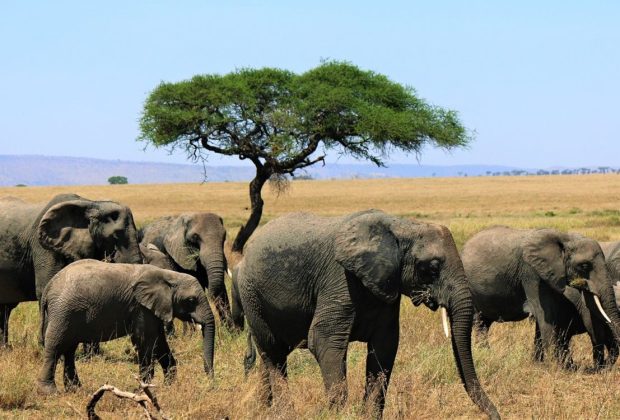
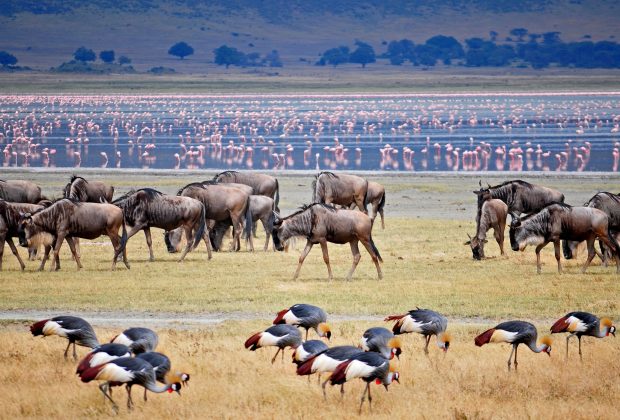
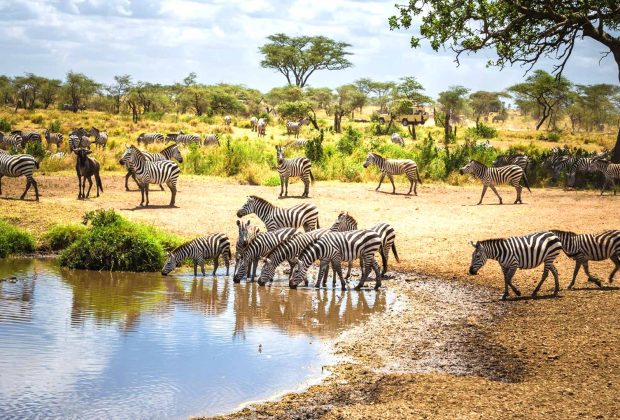
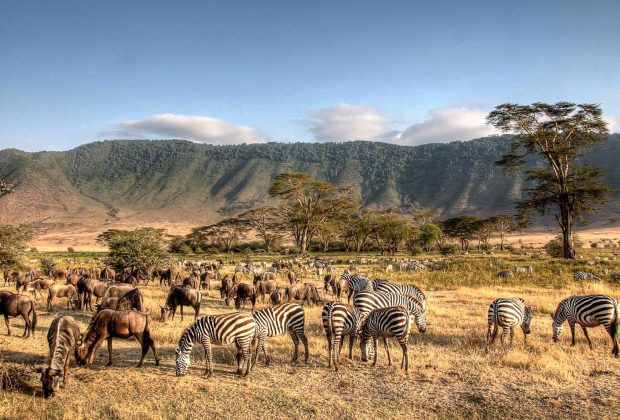
Details of 6 days safari tanzania , Tarangire national park, lake Manyara national park,lake eyasi ngorongoro crater and Serengeti national park
A 6-day safari in Tanzania typically covers some of the most famous and picturesque national parks in the country. Here’s a breakdown of the itinerary for a safari that includes Tarangire National Park, Lake Manyara National Park, Lake Eyasi, Ngorongoro Crater, and Serengeti National Park:
Day O. Arrival day and you’ll be picked up with our tour guide and transfer to Arusha town for dinner and overnight at Karibu heritage house based on bed and breakfast.
Day 1: Tarangire National Park
Depart from Arusha Airport and drive to Tarangire National Park (approximately 2-3 hours).
Enjoy a game drive in the park, known for its large elephant herds, baobab trees, and diverse wildlife including lions, giraffes, zebras, and more.
In the afternoon, head to your Kankari lodge for dinner and overnight stay.
Day 2: Lake Manyara National Park
After breakfast, drive to Lake Manyara National Park (approximately 30-45 minutes).
Explore the park on a game drive, famous for its tree-climbing lions, flamingos, and diverse birdlife.
Enjoy a picnic lunch within the park.
In the late afternoon, depart for your accommodation near Lake Manyara for dinner and overnight stay at Eilliens Tree in🎄 based in full board breakfast lunch and dinner.
Day 3: Lake Eyasi Cultural Experience
After breakfast, drive to Lake Eyasi (approximately 2-3 hours).
Experience the cultural diversity of the region by visiting the local tribes such as the Hadzabe and Datoga.
Engage in activities like hunting with the Hadzabe or learning about traditional crafts from the Datoga.
Return to your accommodation near Lake Eyasi for dinner and overnight stay at Eilliens Tree 🌲 in karatu based on full board breakfast lunch and dinner
Day 4: Ngorongoro Crater
Depart from Eileens tree in 🌲 karatu after breakfast and drive to the Ngorongoro Conservation Area (approximately 1 hour).
Descend into the Ngorongoro Crater, a UNESCO World Heritage Site, for a full-day game drive.
Spot a variety of wildlife including the Big Five (lion, leopard, buffalo, elephant, and rhino), as well as cheetahs, hyenas, hippos, and more.
Enjoy a picnic lunch within the crater.
Later in the afternoon, ascend and drive to Serengeti national park for dinner and overnight stay at African safari camp ikoma based in full board breakfast, lunch and dinner
Day 5: Full day Serengeti National Park
After breakfast, you’ll leave at and proceed to Serengeti National Park, renowned for its vast savannahs and annual wildebeest migration.
The drive from Ngorongoro to Serengeti usually takes a few hours, and you’ll have the chance to enjoy the changing landscapes and spot wildlife along the way.
Once you enter Serengeti National Park, you’ll embark on a game drive, exploring different areas known for their concentrations of wildlife.
The Serengeti is home to the “Big Five” (lions, elephants, rhinos, leopards, and buffalos) as well as cheetahs, giraffes, zebras, hyenas, and many other species.
Your guide will navigate through the park, sharing their knowledge about the animals, their behaviors, and the ecosystems they inhabit.
You’ll have a picnic lunch in the park and continue the game drive, maximizing your chances of encountering unique wildlife sightings.
Later in the afternoon, you’ll make your way to your accommodation within or near the Serengeti, where you’ll spend the night. At African safari camp ikoma rented camp based in full board breakfast lunch and dinner
Day 6: Serengeti National Park to Arusha
On the final day of your safari, you’ll have another game drive in the Serengeti, taking advantage of the early morning hours when animals are most active.
You might witness predators on the hunt or spot grazing herds of wildebeests and zebras.
After the game drive, you’ll head back to Arusha, marking the end of your safari adventure.
The return journey to Arusha will provide another opportunity to appreciate the beautiful Tanzanian landscapes.
You’ll arrive in Arusha in the late afternoon or early evening, where you can either continue your travels or depart for your next destination.
Activities/services included in the cost:
- Accommodation as per the itinerary
Lodges on Full Board - Road transportation in 4wd land Cruiser safari vehicle
Game drives as per the itinerary - Park entrance fees and crater service fees
- English Speaking guides available for the safari
- Accommodation as per the itinerary
Activities/services excluded in the cost:
- Visit to Masai Cultural Village
- All International Flights/local Flights + Taxes
- Visa fees, Travel & Personal accident insurance
- Excursions, services and activities not mentioned in this program
- Personal expenses e.g. laundry, telephone calls, Drinks, Tips and gratuities
Passenger Information
- Passengers should bring only duffle bags safaris{not suitcases}
- All the passengers must have Identification Card/Passport with them for internal flights.
- Baggage on domestic flights is strictly limited to 15kgs per person (including hand luggage). Any excess baggage will be charged by the airline at check-in.
- Passengers arriving to Tanzania may be asked to present a valid Yellow Fever Vaccination Certificate
- Tourist Visa will be obtained at the entry points, but it is advisable to double check before travelling to Tanzania.
What is the best time of year to go on a safari in Tanzania? The best time for a safari in Tanzania depends on your preferences. The dry season (June to October) is ideal for wildlife viewing as animals gather around water sources, but it’s also the busiest time. The wet season (November to May) offers lush landscapes and fewer tourists, but wildlife may be harder to spot due to thick vegetation.
What should I pack for a safari in Tanzania? Essential items include lightweight and neutral-colored clothing, sturdy walking shoes, a wide-brimmed hat, sunscreen, insect repellent, binoculars, a camera with extra batteries and memory cards, and any necessary medications. It’s also advisable to pack layers as temperatures can vary throughout the day.
Do I need a visa for Tanzania? Most visitors to Tanzania require a visa, which can be obtained upon arrival at the airport or purchased online in advance. Visa requirements vary depending on your nationality, so it’s important to check the latest information before traveling.
Is it safe to go on a safari in Tanzania? Tanzania is generally safe for tourists, including safaris, but it’s important to take standard precautions such as staying updated on travel advisories, avoiding isolated areas at night, and following the guidance of your tour guides.
What types of accommodations are available on safari? Accommodation options range from luxury lodges and tented camps to budget-friendly campsites. Luxury lodges typically offer comfortable amenities such as en-suite bathrooms, gourmet meals, and swimming pools, while tented camps provide a more authentic safari experience with canvas tents and communal dining areas.
What wildlife can I expect to see on safari in Tanzania? Tanzania is home to a diverse array of wildlife, including the Big Five (lion, elephant, buffalo, rhino, and leopard), as well as cheetahs, giraffes, zebras, wildebeests, hippos, crocodiles, and a variety of bird species. The specific animals you’ll encounter will depend on the location and time of year.
Are safaris suitable for children? Many safari operators offer family-friendly safari options, including accommodations with family rooms, shorter game drives, and child-friendly activities. However, it’s important to consider the age and interests of your children when planning a safari and to choose activities that are suitable for them.
What is the typical duration of a safari in Tanzania? Safari durations can vary depending on your preferences and itinerary. Most safaris range from a few days to a week or more, with shorter safaris focusing on specific national parks or wildlife areas and longer safaris covering multiple destinations. Customized itineraries are also available to suit individual preferences and schedules.
